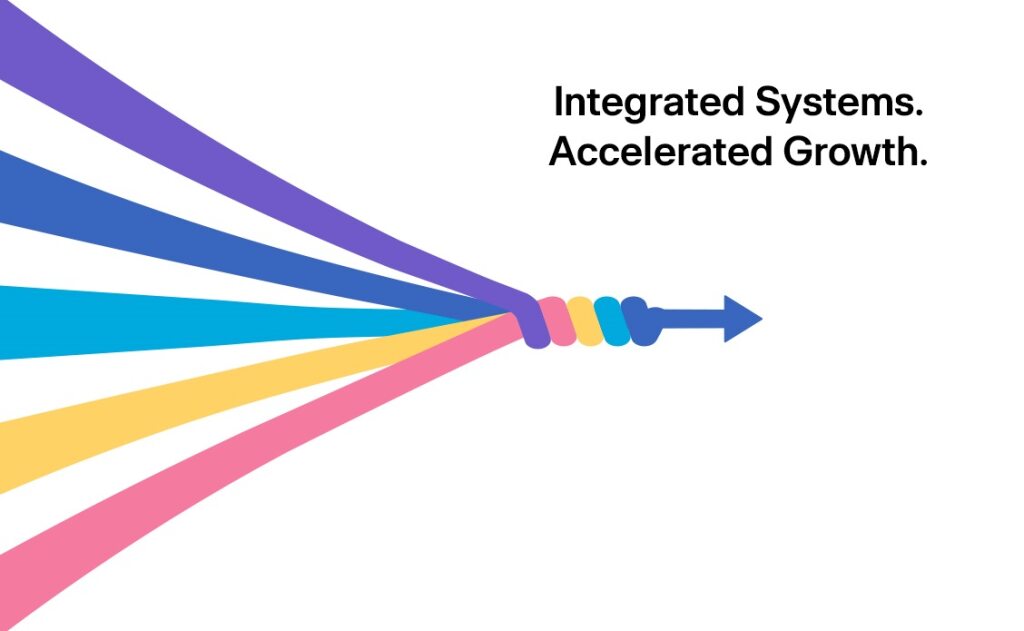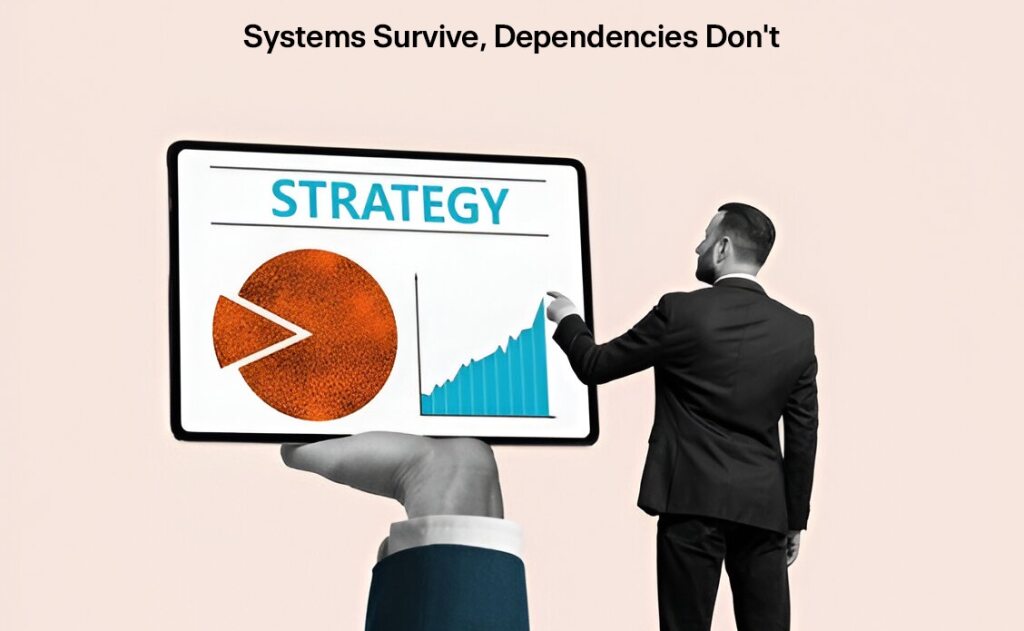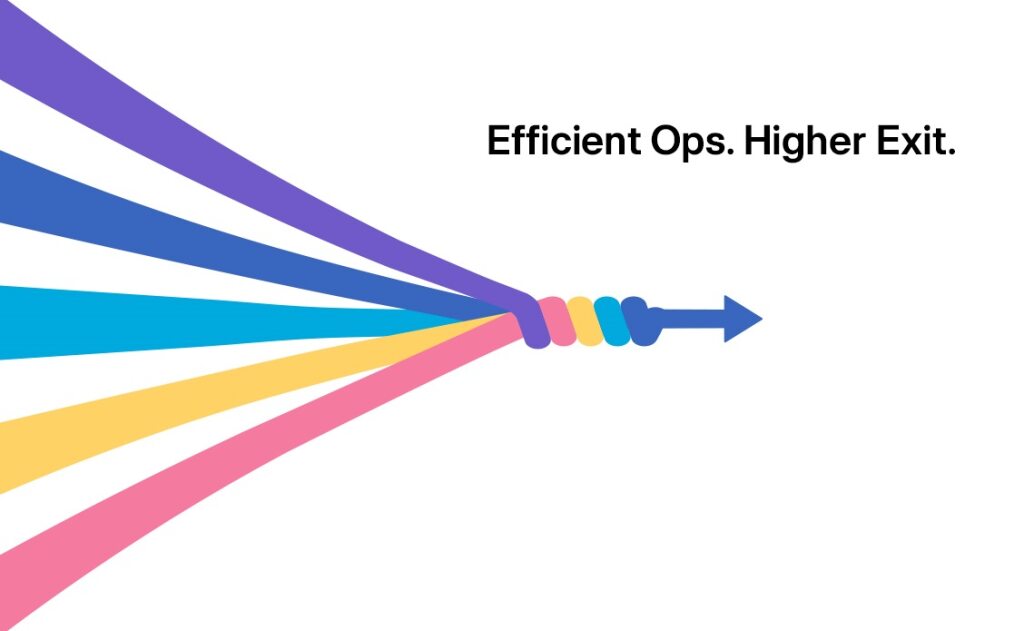Let’s start with the myth:
“Integration” is a one-off initiative. You set it up. You check it off. You move on.
In reality? Integration is the difference between a chaotic business and a scalable one.
At NextAccel, we work with venture-backed and growth-stage companies wrestling with the same core problem: fast growth has left behind a tangle of disconnected tools, siloed data, and manual handoffs. Finance can’t see what sales sees. CS doesn’t trust marketing metrics. And board decks rely on stitched-together spreadsheets no one fully believes.
The root issue? Systems weren’t designed to talk to each other.
And that’s the shift founders need to make: Integration isn’t a technical project. It’s a strategic growth lever.
Here’s why—and how to fix it.
1. Disconnected Systems = Disconnected Decisions
As companies grow, they layer in systems—CRM, billing, product analytics, support, marketing ops. But these systems often evolve reactively, without a unified architecture.
The result?
- Sales forecasts don’t reflect actual usage or revenue
- Finance can’t track margins per product or cohort
- Customer onboarding times balloon with no root-cause visibility
- Exec teams spend more time reconciling data than acting on it
You’re not just losing time. You’re losing confidence—and making slower, riskier decisions.
“We’re not sure what’s real” is not a healthy operating rhythm.
2. Integration Isn’t Just ‘Nice to Have’—It’s Valuation-Critical
When investors or acquirers assess your company, they look for more than just revenue or growth. They ask:
- How repeatable is your go-to-market motion?
- How confident are you in your metrics?
- How fast can your team course-correct when things shift?
Companies with fully integrated systems:
- Forecast more accurately
- Track CAC and LTV by segment
- Improve onboarding and retention metrics
- Increase revenue per employee
- Unlock investor trust (faster diligence, higher multiple)
Disconnected systems don’t just slow you down—they suppress exit value.
3. What Integration Really Means (and Doesn’t)
Founders often confuse system integration with “tool stacking.” But simply using popular tools doesn’t make them talk to each other.
Integration is about flow:
- Data flow – Can information move seamlessly across functions?
- Process flow – Do systems support your actual workflows, not just siloed tasks?
- Insight flow – Can leadership make decisions with a single source of truth?
It’s not about linking everything. It’s about connecting what drives growth and efficiency.
4. The Hidden Costs of Fragmentation
Let’s make this real. Here are just a few ways disconnected systems quietly kill growth:
Lead Leakage
Marketing pushes leads into CRM. Sales doesn’t follow up. No alerts fire. Ops can’t trace where the drop happened. Revenue lost.
Invoice Delays
Sales closes a deal. Billing system isn’t synced. Finance waits on data. Invoices go out late. Cash flow stalls.
Churn Misses
Support logs issues. CS isn’t notified. No proactive outreach. Customer churns. Nobody knows why.
Each of these adds up to real dollars, real delay, and real drag on valuation.
5. Integration as a Growth Lever: 5 Levers That Change the Game
1. Quote-to-Cash Automation
Connect your CRM, billing, and finance systems so that every closed deal auto-generates invoices, syncs to accounting, and updates revenue dashboards in real time.
Outcome: Faster cash collection, reduced manual effort, real-time revenue visibility.
2. Revenue Intelligence Dashboards
Link product usage data, customer lifecycle stages, and support tickets into a unified dashboard that shows net retention risk and upsell potential.
Outcome: Higher NRR, smarter expansion plays, reduced churn surprises.
3. Unified Lead + Pipeline Attribution
Integrate marketing platforms, CRM, and sales activity logs to create full-funnel visibility—what’s working, what’s not, and where conversions stall.
Outcome: Lower CAC, better targeting, faster GTM optimization.
4. Product + Support Sync
Connect your product analytics (e.g., Mixpanel, Amplitude) with support platforms (e.g., Zendesk, Intercom) to flag friction points and product adoption blockers.
Outcome: Faster feature adoption, lower support tickets, improved retention.
5. Board-Ready Reporting Systems
Build investor-grade dashboards by integrating finance, GTM, and product data into a single view—updated daily, not quarterly.
Outcome: Higher trust, faster fundraising, and fewer “data gap” questions during diligence.
6. What Founders Should Do Next
You don’t need a $250K RevOps team to fix this. But you do need a plan.
Step 1: Map Your Critical Workflows
Where does your company lose time, visibility, or confidence? Start there.
Step 2: Identify Systems of Record
Define one source of truth for customers, revenue, product usage, and spend.
Step 3: Prioritize High-Leverage Integrations
Focus on 2–3 data flows that directly impact cash, growth, or retention.
Step 4: Build Light, Flexible Integration Layers
Use tools like Zapier, Workato, or APIs—not full rebuilds—to connect systems with agility.
Step 5: Create an Operating Rhythm Around Integrated Data
What gets integrated should get used—daily, weekly, quarterly. Make it part of how you run the company.
Real-World Example: From Chaos to Clarity in 45 Days
We worked with a $10M ARR SaaS company whose systems were entirely disconnected. Sales was closing deals; finance was tracking in spreadsheets. Marketing had no feedback loop on pipeline quality.
In six weeks, we:
- Integrated Salesforce with Stripe and QuickBooks
- Linked support tickets to churn reporting
- Unified marketing attribution into one RevOps dashboard
- Trained GTM leaders on how to run decisions off the new system
Result:
Invoice-to-cash time dropped 32%.
Churn forecasting improved by 3x.
Sales reps spent 2.5 more hours/week selling—not updating records.
Board confidence soared—and so did the company’s valuation trajectory.
Final Thought: Integration Is an Operating System, Not a One-Time Task
“You don’t need more tools. You need your tools to work together.”
System integration isn’t IT’s job. It’s not a one-off project.
It’s the infrastructure that makes your strategy executable—and your business scalable.
Founders who invest early in integration unlock:
- Faster decisions
- Cleaner metrics
- Better capital efficiency
- And ultimately—higher exit value
At NextAccel, we help teams design integration not as overhead, but as a competitive advantage. If your team is operating in silos, we can help connect the dots.
Want to identify your biggest integration gaps?
Contact us for a 90-minute Systems Flow Audit.




